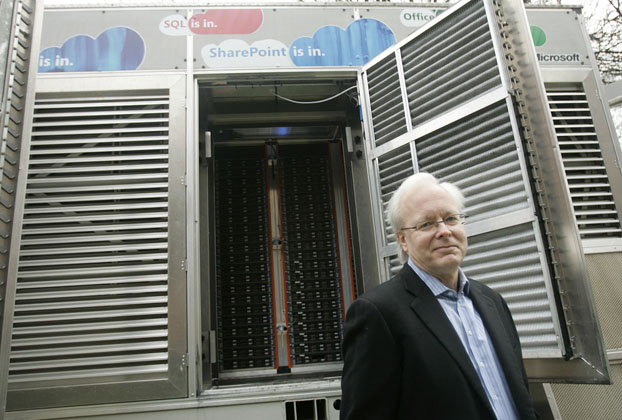Tracking Ozzie's Footprints Across Microsoft
Ray Ozzie was a quiet presence in Redmond, but he left deep footprints throughout Microsoft's global operation that will last for years.
Ozzie is stepping down as chief software architect and preparing to retire, according to an employee e-mail that Microsoft CEO Steve Ballmer sent out Monday.
"He will remain with the company as he transitions the teams and ongoing strategic projects within his organization -- bringing the great innovations and great innovators he's assembled into the groups driving our business," Ballmer wrote. "Following the natural transition time with his teams but before he retires from Microsoft, Ray will be focusing his efforts in the broader area of entertainment where Microsoft has many ongoing investments."
Ozzie joined Microsoft in 2005 when the company bought Groove Networks and took on Bill Gates' secondary title of chief software architect a year later as part of the Gates' retirement transition plan. Ozzie was said to have been most comfortable working in small groups and sharing ideas on a whiteboard, and he reportedly suffered from stage fright before large crowds. He made a huge splash early with the Internet Services Disruption memo that he wrote and that Gates forwarded to the rest of the company. But since then, except for a few high-profile magazine profiles and a handful of speeches and interviews, he has largely faded from the public eye.

|
| Source: Microsoft |
With Ozzie's history in collaboration, especially with Lotus Notes and Groove Networks, some look for his effect in Microsoft's collaboration technologies, and find his influence wanting. But that misses Ozzie's main task, which was to help Microsoft bridge the gap from 1990s dominance to 21st century relevance. Ozzie found that bridge in the cloud and worked relatively quietly, but steadily, on the project.
Ozzie's largest and most tangible footprints are the massive datacenters that Microsoft has been building since 2007. Media reports described Ozzie poring over reports on available electricity and other factors in choosing sites for the facilities. Meanwhile, Microsoft has received notice for innovations in datacenter design around cooling and power consumption. So far, Microsoft now has mega-datacenters costing about $500 million each in Quincy, Wash.; San Antonio, Texas; Dublin, Ireland; and Chicago. Officials in Virginia recently announced another facility coming in the southern Virginia lakeside town of Boydton.
Smaller Ozzie footprints will be evident in the Windows Azure Platform Appliance containers, a strategic advance which could help Microsoft spread its cloud to organizations around the world where laws, regulation or policy require data to reside inside national borders or organizational walls.
Ozzie's other footprints are evident in the array of cloud services Microsoft now offers across nearly its entire product base. Ballmer acknowledged as much in his company-wide e-mail.
"As a company, we've accomplished much in the past five years as we look at the cloud and services. Windows Live now serves as a natural web-based services complement to both Windows and Office. SharePoint and Exchange have now decidedly embraced the cloud. And by conceiving, incubating and shepherding Windows Azure, Ray helped ensure we have a tremendously rich platform foundation that will enable app-level innovation across the company and by customers for years to come."
"With our progress in services and the cloud now full speed ahead in all aspects of our business, Ray and I are announcing today Ray's intention to step down from his role as chief software architect," Ballmer wrote.
Ozzie's was nothing less than a visionary transformation of Microsoft, fully in line with the title of chief software architect. Ballmer says the position isn't being refilled.
The time for setting the cloud vision and planning the datacenter infrastructure to support the vision is passed. Ozzie's finished that job, and, frankly, given his personality, he's not the right person for the next part – evangelizing and selling Microsoft's cloud. Ballmer has been taking up that baton aggressively .See his speeches in March ("we're all in"), at the Microsoft Worldwide Partner Conference ("Oh, cloud") and this month ("cloud, cloud, cloud, cloud, cloud").
To paraphrase the quote famously attributed to Ben Franklin about a republic, Ray Ozzie has given Microsoft a potential leadership position in cloud computing, if Microsoft can keep it.
Posted by Scott Bekker on October 19, 2010